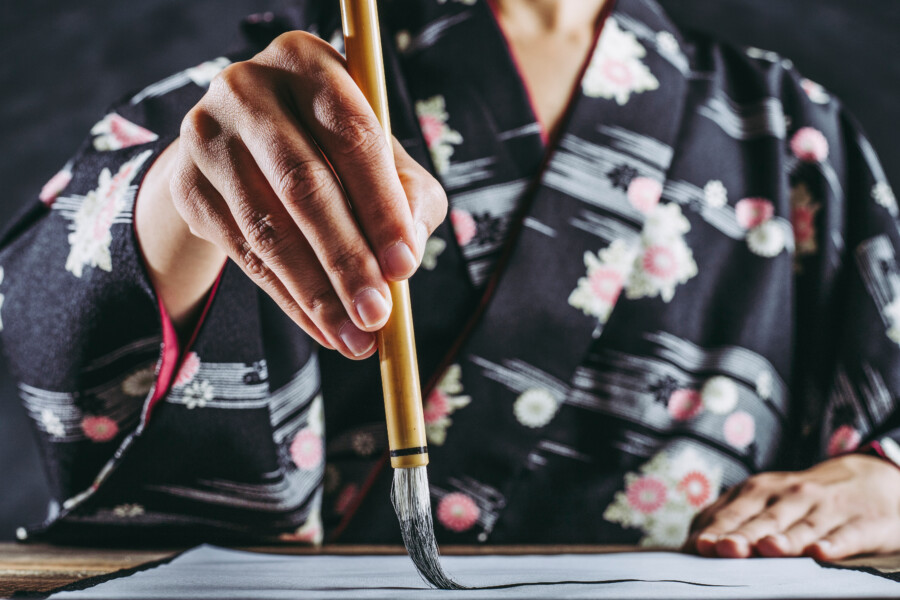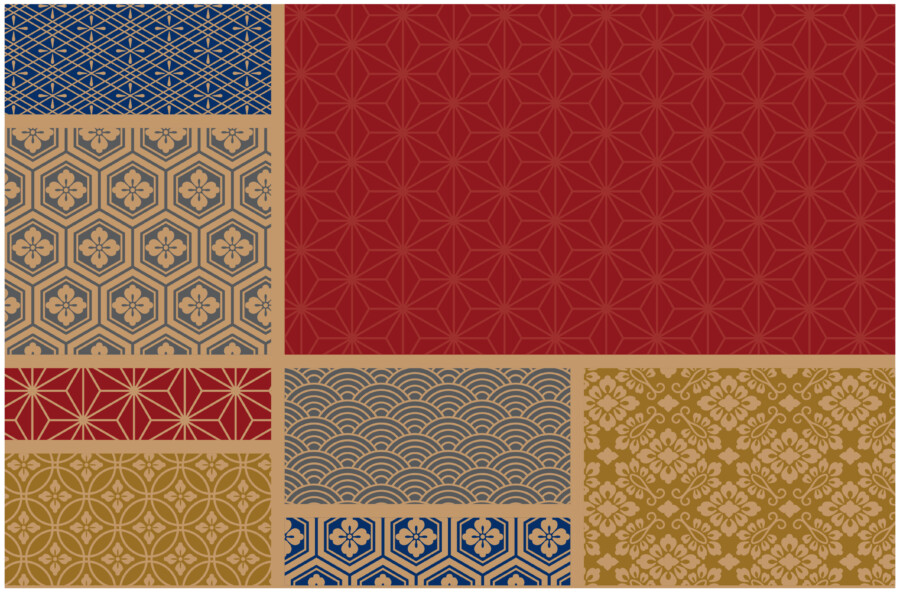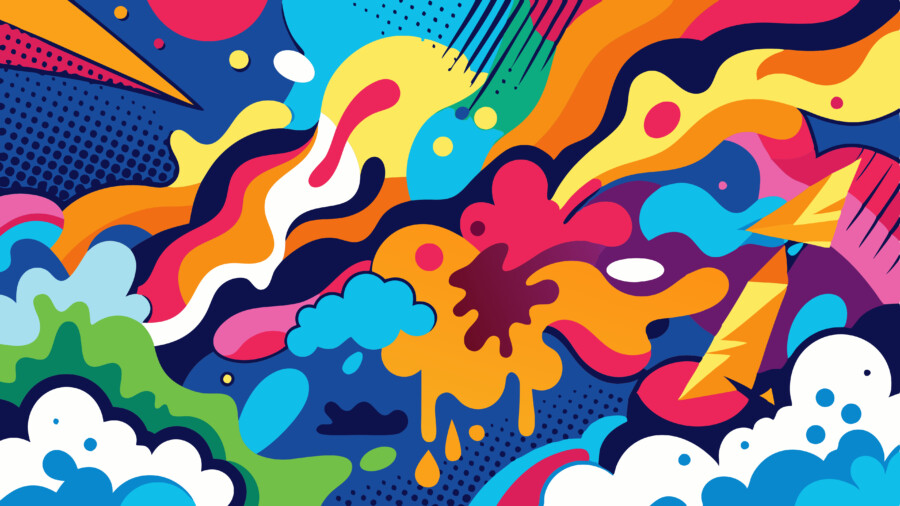
Thinking and Key Points for Kanji Logo Design
This article focuses on kanji logo design, thoroughly explaining its concept and important considerations during creation. It’s explained in an easy-to-understand manner for beginners, so please use it as a reference.
Kanji-Inspired Package Artwork
What is a Kanji Logo?
Kanji and Brand Image
Kanji logos strongly express brand individuality due to their unique texture and cultural background. Kanji, forming the foundation of Japanese language with a long history, deeply imprints its meaning and image in people’s minds. For example, the images conveyed by each kanji character, such as strength, tradition, trustworthiness, intelligence, and beauty, play a crucial role in effectively communicating the brand’s message. A kanji logo functions not just as a sequence of characters, but as a visual symbol expressing the brand’s story and values.
Types of Kanji Logos
Kanji logos range from simple to complex styles. The design of kanji logos varies greatly depending on the type of kanji used, font, arrangement, and color scheme. For instance, the impression of the logo differs significantly depending on the writing style, such as kaisho (block script), gyosho (semi-cursive script), or sosho (cursive script). The meaning and image conveyed by the logo also change based on the combination and arrangement of kanji. Kanji logo design allows for various expression methods to be chosen according to the brand’s target and image.
Conditions for a Good Kanji Logo
Simple and Intuitively
Understandable The simpler a kanji logo is, the easier it is for many people to remember. While complex designs may catch the eye at first glance, they have the disadvantage of being difficult to remember. A good kanji logo design can clearly convey the brand’s message while remaining simple. Aim for a concise and memorable logo that maximizes the strength and beauty inherent in kanji.
Expressing the Brand’s Worldview
A logo is an important tool for visually conveying a brand’s message and philosophy. Kanji logos are particularly effective in expressing a brand’s worldview. For example, if you want to express traditional Japanese culture, you can use classical fonts or incorporate traditional Japanese motifs into the design. Conversely, if you want to express a modern image, you can use modern fonts or opt for a simple design. By visually expressing the brand’s individuality and values, kanji logos play a role in creating empathy with customers and deepening understanding of the brand.
Timeless and Universal
A design that doesn’t depend on temporary trends is required. A condition for a long-loved logo is a universal design that isn’t swayed by fads. Kanji is a culture that has been passed down through ages, and its strength and beauty will never fade. Aim for a kanji logo design that will be passed down through generations without being affected by trends.
Points for Choosing Fonts
Types of Japanese Fonts
The impression of a logo changes greatly depending on the font. Choose an appropriate writing style according to the purpose. Japanese fonts are broadly categorized into Mincho, Gothic, Kaisho, Gyosho, Sosho, and others. Mincho style gives a classical image, conveying trustworthiness and luxury. Gothic style gives a modern image, conveying a simple and stylish impression. Kaisho style gives a traditional image, expressing calmness and elegance. Gyosho style gives a flowing image, conveying a unique impression. Sosho style gives a free-spirited image, conveying an artistic impression. The writing style suitable for logo design needs to be carefully chosen according to the brand’s image and target.
Prioritize Visibility
By choosing a highly visible font, you can maximize the effect of the logo. In kanji logos, visibility is extremely important as the characters themselves become design elements. Especially when used in small sizes, it’s necessary to choose a highly visible font. A highly visible font is one that is clear, easy to read, and easy to remember. In logo design, it’s also necessary to consider the thickness of the font, the thinness of lines, and the balance between character spacing and line spacing.
Font Size and Spacing
By properly balancing character spacing and line spacing, the logo becomes easier to see. Font size, character spacing, and line spacing greatly affect the balance and visibility of the logo. If the character spacing is too narrow, the characters appear cramped and difficult to read. Conversely, if the character spacing is too wide, the characters appear scattered, giving an impression of lack of cohesion. Similarly with line spacing, if it’s too narrow, the characters appear to overlap, making them difficult to read. By setting appropriate font size and spacing, you can improve the visibility of the logo.
Tips for Color Scheme
How to Choose Colors
Creating unity by matching brand colors with logo colors. Brand color is the color that symbolizes the brand, and logo color plays the role of visually expressing the brand color. By matching brand colors with logo colors, you can enhance the unity of the brand. Also, by choosing a color theme that matches the brand color, you can make the logo design more sophisticated. A color theme is a color combination pattern of multiple colors, which has the effect of giving unity to the logo design.
Utilize Contrast
Enhance visibility by utilizing color contrast. Contrast refers to the difference in brightness between colors. The greater the color contrast, the higher the visibility. In kanji logos, it’s important to be conscious of the contrast with the background as the characters themselves become design elements. Especially when used in small sizes, visibility can be improved by increasing the contrast with the background.
Psychological Effects of Colors
As each color has psychological influences, consider a color scheme that matches the purpose of the logo. For example, red evokes passion and excitement, blue evokes calmness and trustworthiness, green evokes nature and peace, yellow evokes brightness and hope, white evokes purity and cleanliness, and black evokes luxury and dignity. In logo design, by considering the psychological effects of colors, you can effectively convey the brand’s image.
Things to Avoid in Logo Design
Plagiarism of Other Designs
Using someone else’s design as is can be legally problematic. Logo designs are protected by copyright. Using someone else’s design without permission constitutes copyright infringement and may result in legal liability. When creating a logo design, strive for original design and avoid referencing others’ designs.
Excessive Decoration
If too many elements are crammed in, the logo becomes difficult to see and fails to serve its original purpose. The simpler a kanji logo is, the more memorable the design becomes. Excessive decoration can impair the visibility of the logo and potentially blur the brand’s image. In logo design, be conscious of simplicity and narrow down to only the necessary elements.
Not Considering Usage Scenarios
Consider design with awareness of size and usage scenarios. Logos are used in various scenarios such as business cards, websites, and signboards. The size and design of the logo differ depending on the usage scenario. For example, a logo used on a business card needs to be designed with high visibility even when small. A logo used on a website needs to be designed to be easily visible and impressive even when large. In logo design, consider the usage scenarios and create appropriate designs.
Conclusion
Create a logo that enhances brand power by grasping the basics and points of caution in kanji logo design. Kanji logos are effective tools for highlighting brand individuality and creating empathy with customers. Please design a kanji logo that maximizes the appeal of your brand, referencing the points introduced in this article.
Using the points introduced in this article as a reference, please design a kanji logo that maximizes the appeal of your brand. A kanji logo is a visual symbol that expresses the brand’s story and values, playing an important role in deepening connections with customers. In the design process, thoroughly understand the brand’s target, image, and message, and aim for a logo that can express these.
Kanji & Cultural Accuracy Check












